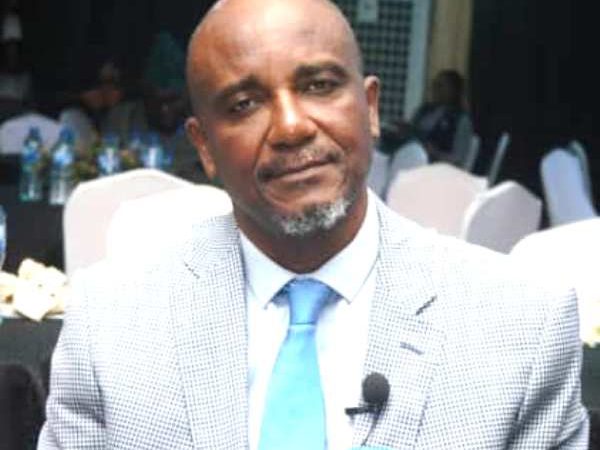NAMA’s ATC Recruitment Process Dangerous To Safety, Says NATCA

The President of National Air Traffic Controllers Association (NATCA), Mr. Abayomi Agoro says the process being adopted by the Human Resource Department section of Nigerian Airspace Management Agency (NAMA) for recruitment of Air Traffic Controllers (ATCs) is dangerous to air safety.
Speaking during an interaction with the executives of League of Airports & Aviation Correspondents (LAAC) during a courtesy visit, Agoro said several letters had been written to the Minister of Aviation on equipment and manpower gaps.
“The most unfortunate thing is that all the write-ups are only dwelling on geographical selection. Yes, it is one of the problems, but the most critical problem is for them to even find out whether those people that are shortlisted for training really merit that training.
To be an ATC, there are two critical things there; your technical knowledge and your fair attitude. We find it so disheartening to hear that NAMA has arranged a recruitment exercise in which we, as an association are not even aware of it.
The recruitment of ATCs has a due process to follow. First, you place an advert and where you don’t place, you ensure that you make the information go round as much as possible, so that people can apply. Then, they will go for what we call technical evaluation and other assessments. From there, you select the best of them. In this case, we only heard that 40 people were shortlisted. Who are these people?
Then, who are the people that are supposed to be in charge of recruitment of ATCs? It is not the duty of NAMA HR. It is the duty of the professionals, the directorate in charge. How do you expect somebody who does not know anything about a profession to now be the one to recruit, to source it? Is it because now recruitment of ATC is no longer casualized?
This association fought for non-casualization of Air Traffic Controllers in 2015 and when we finally won the battle, NAMA HR went ahead and hijacked the whole process. Today, they do all kinds of things and go and meet people in Abuja. They have a space to employ people and they do all kinds of things, which is very dangerous to safety.
The issue is that the recruitment is not transparent and does not follow due process and moreover, let me also say the number of air traffic controllers we need to shore up the gap is not that 40. If they really want to address that, it should be a nationwide thing. For now, the number of ATCs we have is far less than 400 and by this year to next year, quite a number of our senior ATCs will be retiring.
That is one. We are getting new airports. At least, we know about Anambra, Bayelsa and Ogun States. We need ATCs in those places. Where are we going to get them from? Apart from retirement due to age, there is also the health aspect because of the nature and stress of the job. It causes a lot of stress. That is why NCAA has made conditions for us for annual medical checkups. It’s an ICAO requirement.
Now, if we are working with the present number of air traffic controllers, you should know that the stress they are passing through is unquantifiable. So, like the number they are given, they say 40; to do what? And we have requested severally, let them review even age limit for ATC because we just need to cover the gap. We have written up to the Ministerial level but unfortunately, when it gets to the recommendation of NAMA, what we get to hear is what has happened from the outside.
As a professional body, we insist on keeping to the professional requirement but unfortunately, you cannot just pick anybody on the road: attitude, interest, disciple, these are core values; not when somebody needs a job, you just say ‘make him an air traffic controller. No! And who are the ones that are able to ensure such things are done properly? Not somebody whom you contracted the job to.
The recruitment is an exercise, so, what it entails is for the directorate to set up a panel where even HR will also be there. The only job for them is to document those that have been selected based on merit, but for the selection process, it is the directorate that has been in the system till when the Federal Ministry of Labour and Productivity placed a lien on NAMA not to employ controllers on casual basis, because controllers are employed on casualization. They will recruit you. After passing through all these exercises, they now send you to Zaria and they will not give you the employment. It is when you pass out of the college your letter will be out. The association challenged that, because people in HR in NAMA are always looking for something inimical against our people.
That’s why I am telling you that quite a number of young controllers are stagnant. Some have spent seven to eight years in a position; no promotion and you want such a person to be working and taking critical decisions on safety? That is the situation we have found ourselves.
The last time, we had to appeal to the Honorable Minister to intervene. We got the intervention. He granted our prayer but these people still went behind and started implementing it the way they want; just like the lady that has been in level 7 since 2013. That is why you see a younger person come into the profession gets disheartened.”
Agoro adds that Kaduna airport does not have control tower. “What they are using there is watch room (for fire fighters), which is not built for that purpose and we have been calling on the government to do something. We go to Sokoto. Once it rains today, controllers will go to look for umbrellas to sit at the control tower and what is it? Some of the control towers attached to the terminal buildings some were ceded to FAAN, while those standing alone were with NAMA, but we have approached the two organization. The lift too, NAMA will be waiting for FAAN to put it in order, FAAN will say is it our staff that are working there and that is simply due to bureaucracy. You now discover controllers will continue to suffer.
We are still battling with terrestrial radio frequency, communication here and there. Calabar is there; there is no airport you will go to today that you would say things are working 80 per cent.
We should have at least 600 to 650 ATCs. Let me also tell you, there is no point in leaving one controller on duty in the tower, it is dangerous and we must say it and while a station like Kaduna has less than six Air traffic controllers, definitely they will work only one per shift, but I can tell you that NAMA has close to 4,000 staff.
Even, in some departments you see them drawing a roster, ‘if you come this week, don’t come next week.’ So, what are we trying to say? NAMA at a point, we tried to do internal recruitment just to see whether we can bring some of these redundant staff and train them. At least, it would help the system, but they don’t want, and those who agreed to convert are regretting that decision today.
Many of them, for seven or eight years, they’ve been in one place, which is a great discouragement to others who would want to, and what is NAMA HR trying to do? They are asking ‘who asked you to convert and go there?’. They are now our members, but many of them are regretting that decision. Is that how an organization should be? And people come to work day-in-day-out doing nothing and after sitting down they are paid.
They have brought so many people in the agency that who are not meaningfully engaged. All they just do is to sit down and we are talking about a critical area where we have gap. I paid courtesy visit to the minister and he said he would not support us to engage contract staff because as you know some of our members do come back on contract. The minister said we can try and engage the younger ones. We said yes, the association prefers that because NAMA will train them and they will have a long working span, only for us to now hear that 40 people have been engaged. It’s shameful.”







